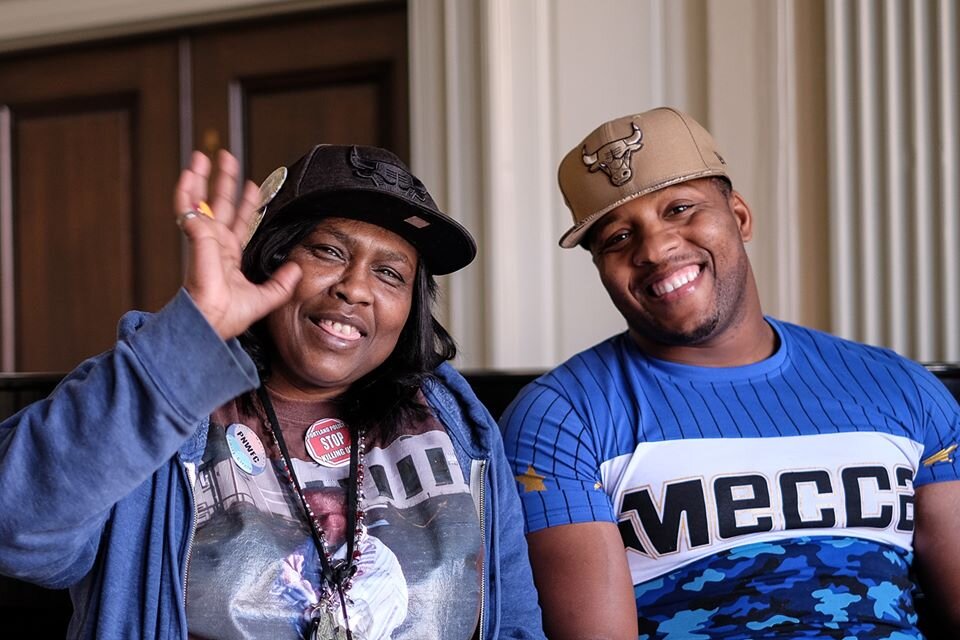Save Lives, Free Prisoners
By Terrence Hayes
Terrence Hayes is a leader with Liberation Literacy. Liberation Literacy works with people in prison and outside to build social justice literacy. He is also a member of Oregon DA for the People, a campaign to reduce the harms of the criminal legal system by calling on district attorneys to adopt a community-led platform.
There are 14,000 people in Oregon jails and prisons today. The Department of Corrections just announced a staff person tested positive for COVID-19. Based on my experience as a prisoner in Oregon, all prisoners and staff are at risk of getting sick-- and potentially dying. To stop the spread of this disease, public health experts recommend leaders dramatically reduce the number of people in prisons and jails.
When I was in county jail, there was a serious staph outbreak. Staph is a common bacterial infection and is easily treated-- but it can be fatal if not addressed. The jail staff could not get it under control. People were getting such bad infections they had painful scars. Staph and other infectious diseases run rampant in jails and prisons, where basic supplies like soap are often not available and health care is inadequate.
Many people in our prisons are vulnerable to COVID-19 because of their age or underlying health conditions. All of them have family or friends who love them and care about them. None of them deserve to die in a cage from a disease they couldn’t escape.
As a leader with Liberation Literacy, I talk all the time with people who are incarcerated. They are terrified. All prisoners can do to stay safe is hope that guards and prison staff are washing their hands.
Public health experts agree we need to release as many prisoners as possible. People serving charges for misdemeanors, people in pretrial detention, people who are vulnerable because of their health or age, people with a year or less to serve on their sentence. Sheriffs can release people who are in county jail. The Governor can release people in state prison.
In this situation, sheriffs and the Governor wield a lot of power. Most people don’t know that the reason so many people are imprisoned today is not sheriffs or judges or police. It’s the district attorney or DA. They are the most powerful people in the criminal legal system.
Elected by voters, DAs decide who to charge with crimes—and who not to charge. They decide which crimes to charge, what sentences to recommend, and whether and when to offer plea deals. They decide when to send someone to treatment or diversion programs instead of prison. That’s a lot of power. But on May 19, the power will shift when most of Oregon’s counties vote in DA races-- including Multnomah and Clackamas counties.
Oregon DA for the People has been building pressure on DA candidates to listen to those most directly impacted by the criminal legal system. The demands of our community-led platform are needed now more than ever. DAs can keep people out of the system by declining to prosecute unjust charges and low-level cases. With fewer cases to prosecute, DAs can shift resources to support community needs for health and safety.
Building a life after prison is difficult in normal times. Folks who are released now will need support finding housing and staying safe and healthy. Liberation Literacy and many other groups are ready to help.
Today, I’m an electrician, and my wife has a nail salon. Together we have eight beautiful kids. We are all staying home these days, and staying safe.
The 14,000 people in Oregon’s prisons and jails can’t “Stay Home and Save Lives.” Our elected officials are talking a lot about public safety. That means keeping prisoners safe too. The only way to do that is to release as many people as possible, while they can still be sent home to their loved ones.
[Image description: This is a photograph of two African-American people sitting together. They are smiling widely. They look affectionate for each other, sitting so close their arms and shoulders are touching. Their heads lean in towards each other. Both are looking directly at the camera.The person on the left is Donna Hayes. She wears a Black Chicago Bulls hat, a number of justice buttons related to police violence, and is waving. The person on the right is Terrence Hays. He wears a tan Chicago Bulls hat. Photo credit: Kendall Kendall]
